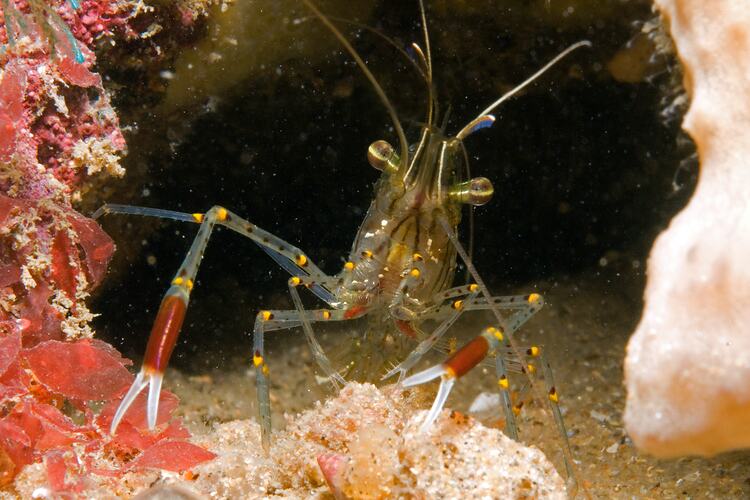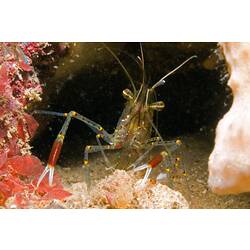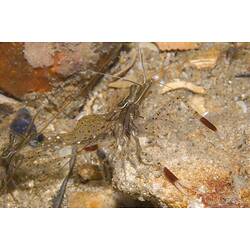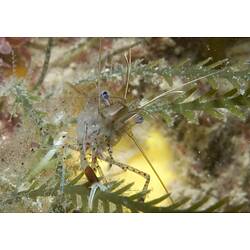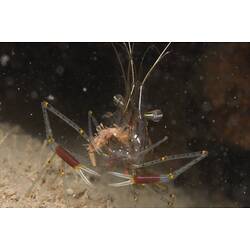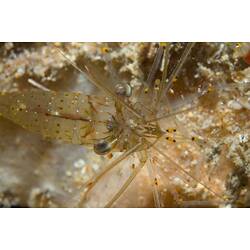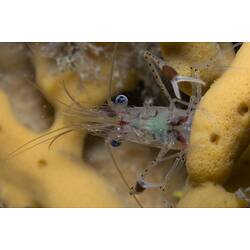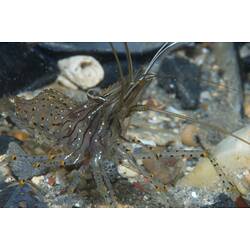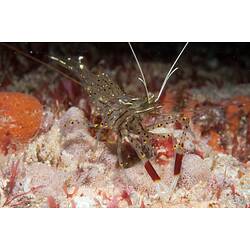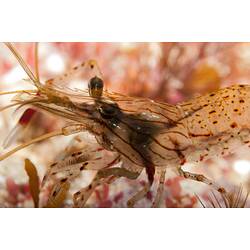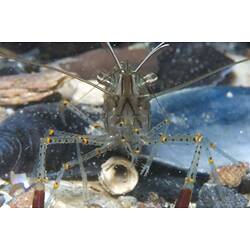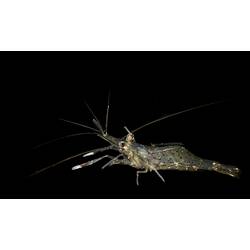General Description
Body transparent with thin red lines on the carapace and red spots along the abdomen. Claw red with white tip. Up to 6 cm long (head to tail tip).
Biology
Red-handed Shrimps feed on algae or scavenge for animal matter. While most commonly found in sea water, they do also occur around the mouths of estuaries, but always in the higher salinity areas. The females are larger than the males. Eggs are carried under the abdomen.
Distribution
Southern and eastern Australian coast.
Habitat
Reef, seaweed, seagrass meadows, including tidal pools, to depth of 12 m.
More Information
-
Animal Type
-
Animal SubType
-
Brief Id
Shrimp with red lines and spots on body, white claw tips.
-
Colours
Red, Transparent
-
Habitats
-
Diet
Omnivore
-
Diet Categories
Animal matter, Algae
-
Hazards
Small claws but unlikely to nip.
-
Endemicity
-
Commercial
No
-
Conservation Statuses
CITES: Not listed, FFG Threatened List: Not listed, EPBC Act 1999: Not listed, IUCN Red List: Not listed
-
Depths
Shore (0-1 m), Shallow (1-30 m)
-
Water Column Locations
On or near seafloor
-
Taxon Name
-
Scientific Author
(Heller, 1862)
-
Common Name
Red-handed Shrimp
-
Other Names
Rock-pool Prawn
-
Phylum
-
Subphylum
-
Superclass
-
Class
-
Subclass
-
Superorder
-
Order
-
Suborder
-
Infraorder
-
Superfamily
-
Family
-
Subfamily
-
Genus
-
Species Name
serenus
